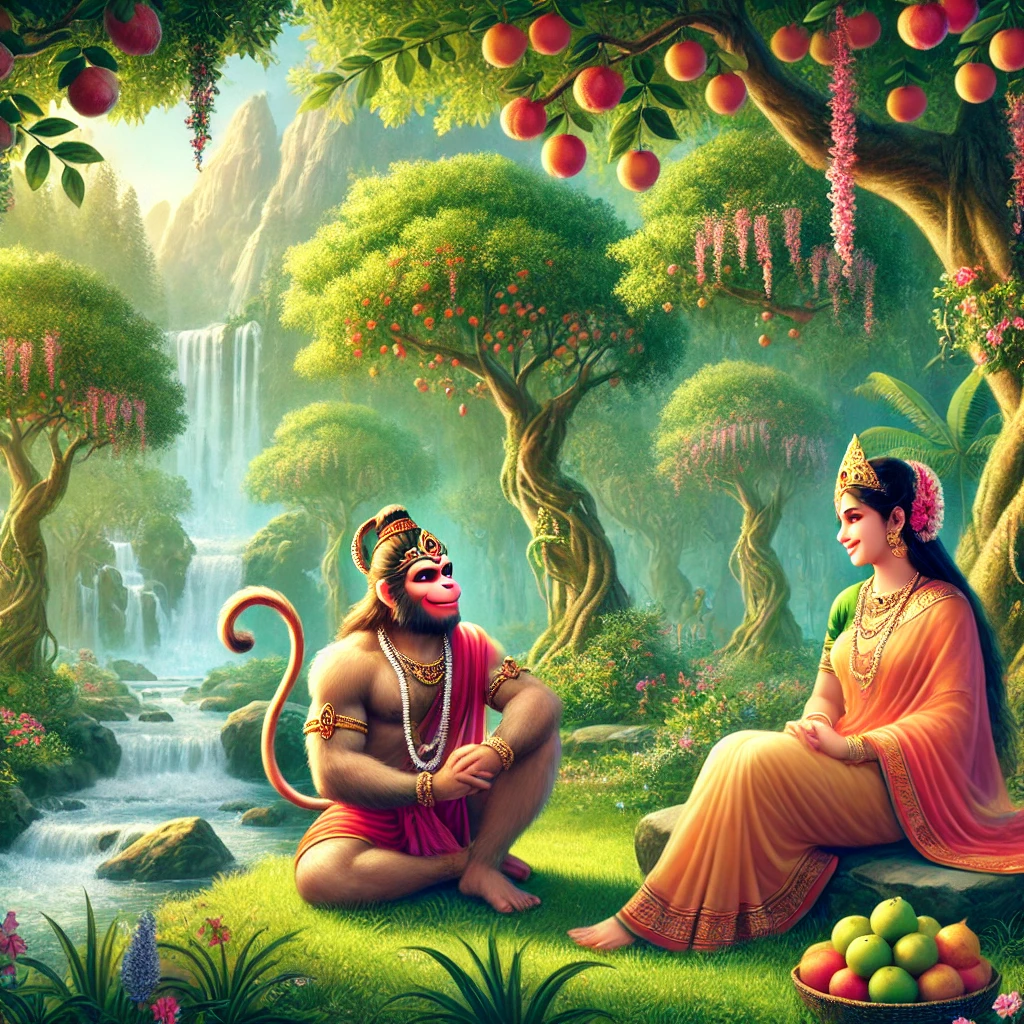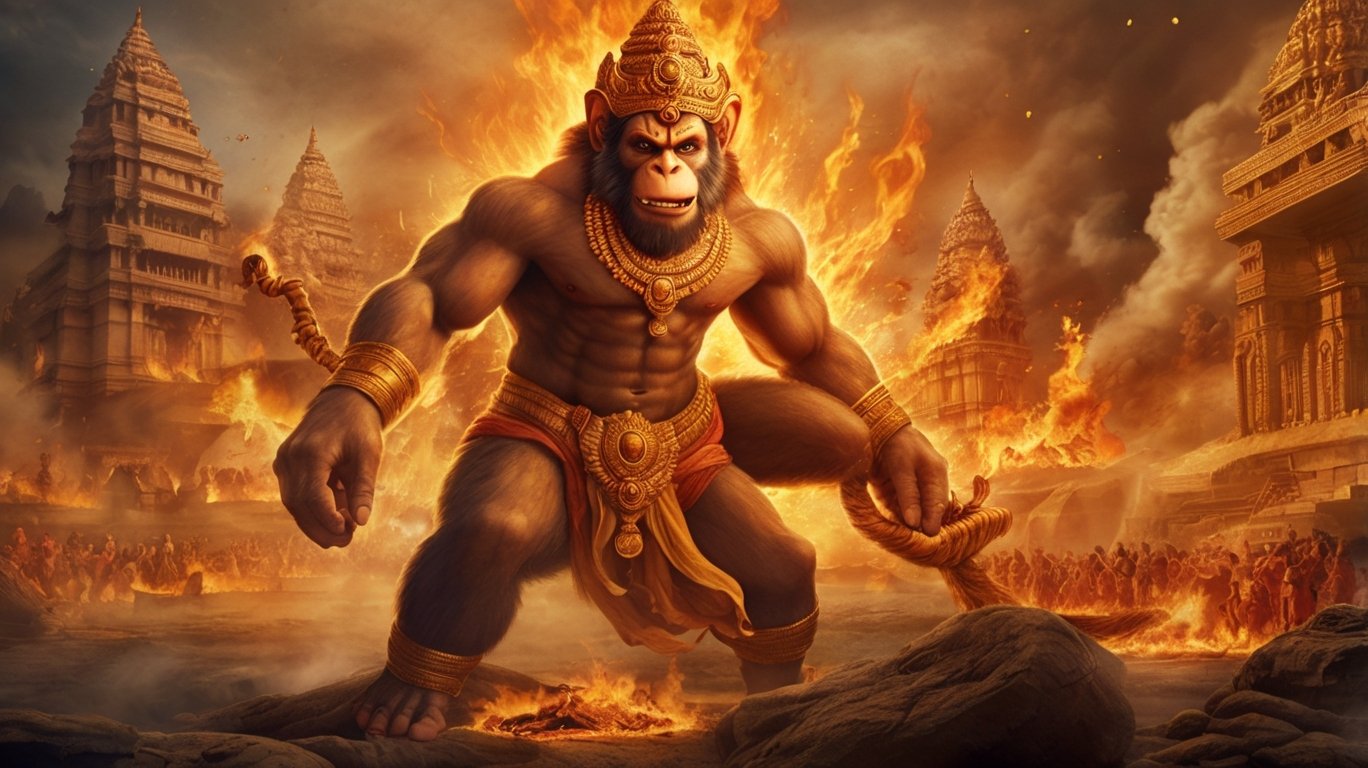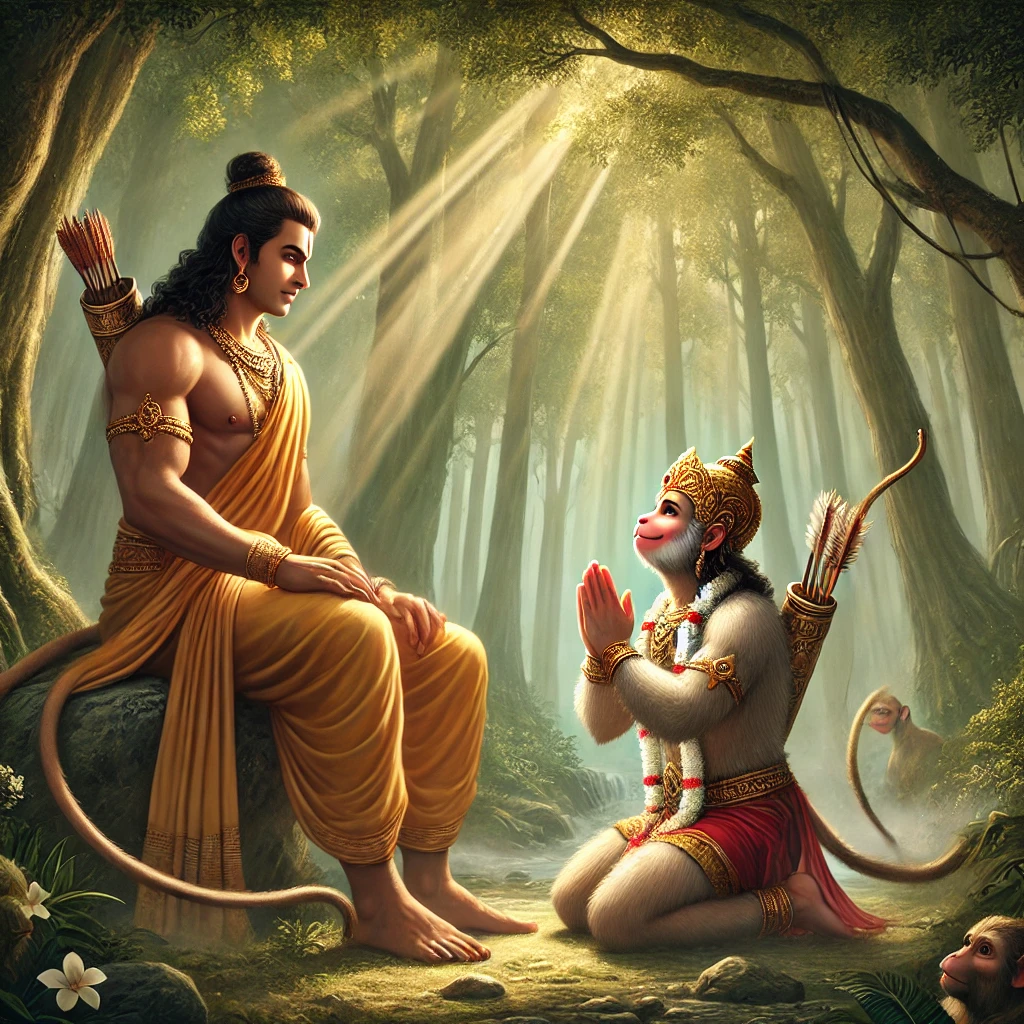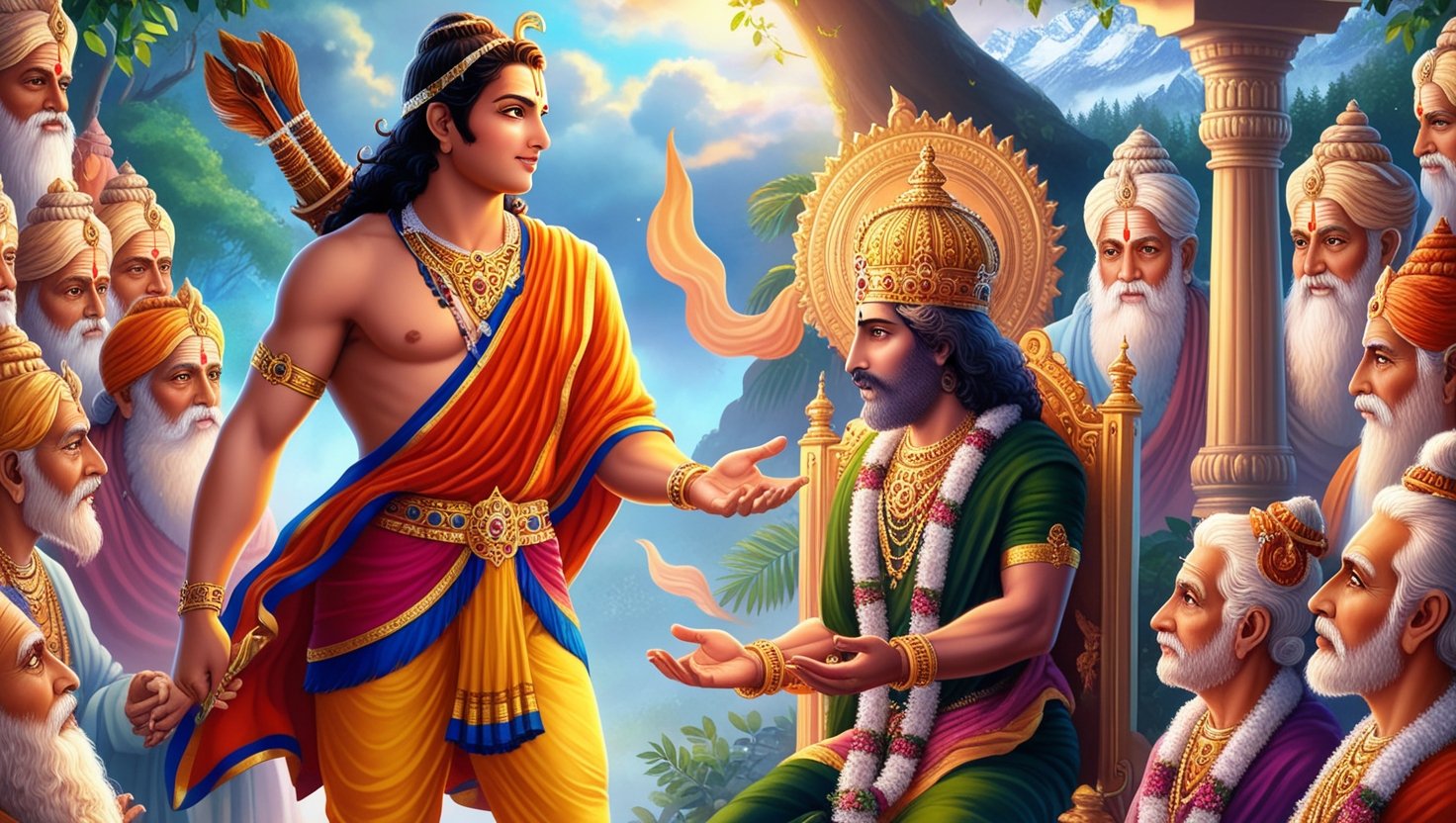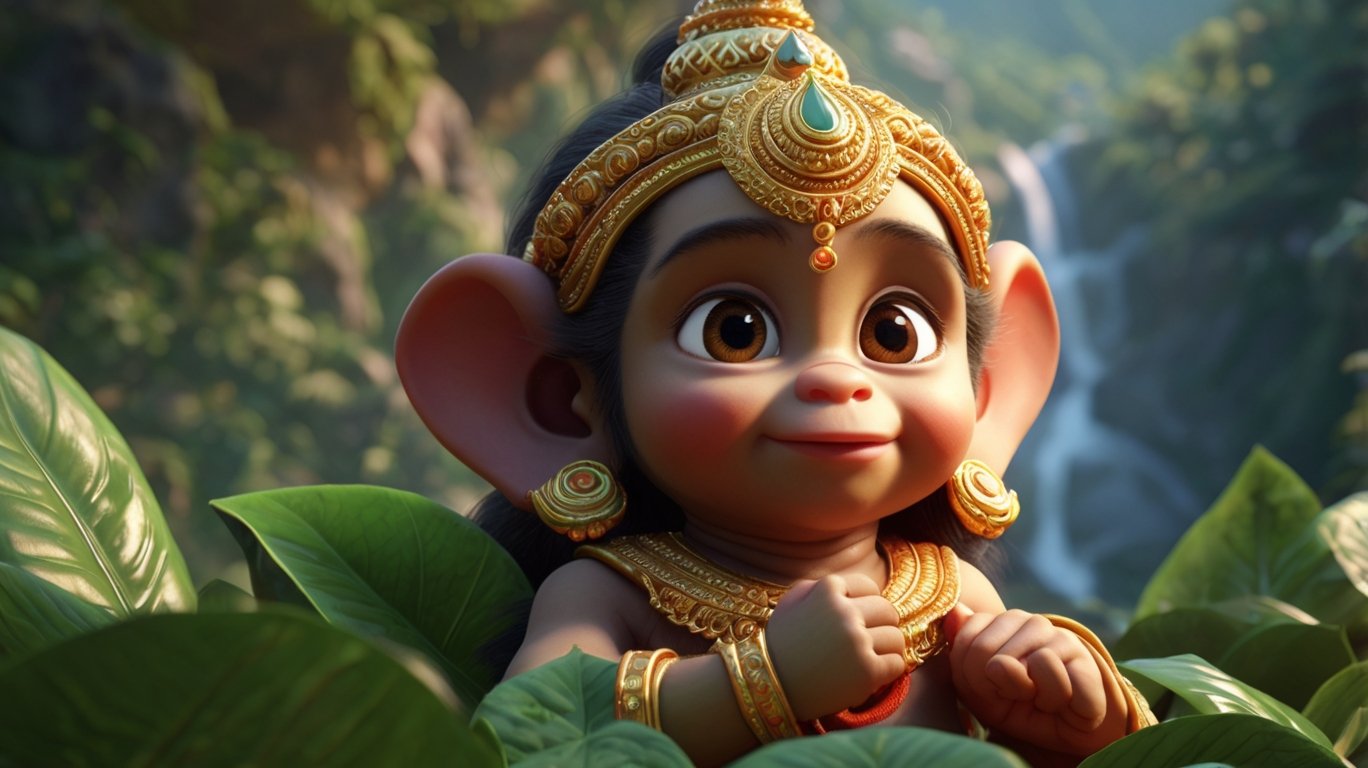Table of Contents
Introduction
Welcome to Bedesii.com, where we embark on a profound journey through the captivating tales of devotion, bravery, and divine wisdom! In this installment of our series, we delve into the heartfelt interactions between Hanuman and Sita, as depicted in the Sundarkand. These verses resonate with themes of love, loyalty, and the unwavering spirit of service that characterize Hanuman’s devotion to Lord Rama.
As we explore these verses, you will uncover the emotional depth of Sita’s plight, the compassion of Hanuman, and the timeless lessons they impart. From the delicate nuances of their dialogue to the larger-than-life challenges they face, each moment is rich with meaning and significance.
Prepare to be inspired as we unfold the wisdom embedded within these sacred texts, revealing the powerful connections between the characters and their divine purpose. Whether you are a devoted follower or simply curious about these stories, this blog promises to enlighten and uplift your spirit. Let’s dive deeper into this remarkable narrative together – Hanuman Meeting with Sita Maa.
Doha
Taba Hanumanta kahi saba Rama katha nija nama,
Sunata jugala tana pulaka mana magana sumiri guna grama.
Explanation
As Hanuman meets Vibhishana, he begins to recount the glorious tales of Lord Rama, revealing his own identity as Rama’s devotee and messenger. Hanuman narrates the events of Lord Rama’s journey with great passion, highlighting his divine virtues. As Vibhishana and his wife listen to the recounting of Lord Rama’s qualities and heroic deeds, they are deeply moved. Their bodies shiver in devotion, and their hearts become filled with joy, completely absorbed in the remembrance of Rama’s greatness.
This moment illustrates the transformative power of divine stories. When one speaks or listens to tales of the Lord with full devotion, the atmosphere becomes charged with spiritual energy, and the listener is filled with bliss. Here, Hanuman not only carries out his mission but also deepens Vibhishana’s love for Lord Rama, emphasizing the purity and strength of Rama’s influence over his devotees.
Verses
Sunahu Pavanasuta rahani hamari, jimi Dasananhi mahu jibha bichari.
Tata kabahu mohi jani anatha, karihahi kripa Bhanukula natha.Tamasa tanu kachu sadhana nahi, priti na pada saroja mana mahi.
Ab mohi bha bharosa Hanumanta, binu Hari kripa mialhi nahi santa.Jau Raghubira anugraha kinha, tau tumha mohi darasu hathi dinha.
Sunahu Bibhishana prabhu kai riti, karahi sada sevaka para priti.Kahahu kavana mai parama kulina, kapi chancala sabahi bidhi hina.
Prata lei jo naam hamara, tehi din tahi na milai ahara.
Explanation
These verses depict a heartfelt conversation between Vibhishana and Hanuman, where Vibhishana expresses his feelings of humility and devotion. Vibhishana, a noble soul living amidst demons, opens up to Hanuman about his position in Ravana’s Lanka. He compares his life to the delicate existence of a tongue amidst sharp teeth, constantly in danger yet enduring with hope. Despite living among evil forces, he has never lost faith that the Sun dynasty (the lineage of Lord Rama) will shower him with mercy and protect him.
Vibhishana further acknowledges his limitations, describing his body as ‘Tamasa,’ filled with ignorance, incapable of performing intense penance or gaining deep spiritual realization on his own. Yet, Hanuman’s presence gives him a renewed sense of hope. He believes that without the grace of Lord Hari (Rama), one cannot meet a true saint like Hanuman.
Hanuman reassures Vibhishana, explaining that it is the nature of Lord Rama to shower love and affection on His devotees. He also humbly questions his own worth, describing himself as an insignificant monkey, fickle in nature and lacking nobility, yet still able to serve Lord Rama.
This exchange reveals deep spiritual truths. Vibhishana’s humility, combined with his trust in divine grace, is a lesson for all. Even in challenging circumstances, faith in the Lord’s mercy is the only way forward. Similarly, Hanuman’s humility, despite his great abilities, teaches us the importance of staying humble and devoted.
Vibhishana believes that simply taking Lord Rama’s name with devotion ensures that one will not suffer. It shows the power of faith, surrender, and the compassionate nature of the divine.
Doha
Asa mai adhama sakha sunu mohu para raghubira,
Kinhi kripa sumiri guna bhare bilochana nira.
Explanation
In this Doha, Vibhishana continues his emotional outpouring to Hanuman, expressing his deep gratitude towards Lord Rama. He humbly describes himself as the lowest and most unworthy of beings, yet the Lord of the universe, Rama, has shown immense compassion and kindness towards him.
Vibhishana tells Hanuman, “Listen, O friend, even though I am so lowly and insignificant, Lord Rama has been gracious enough to bless me.” As Vibhishana recalls the divine qualities and grace of Lord Rama, his eyes fill with tears of gratitude and devotion.
This verse highlights a key spiritual teaching: No matter how unworthy or flawed one may feel, the grace of the Lord is limitless. Rama’s love and compassion extend to all, even those who consider themselves undeserving. Vibhishana’s tears are a symbol of his deep emotional connection and his overwhelming sense of gratitude for being accepted and loved by the divine. This reflects the boundless mercy of Lord Rama, who lifts even the humblest devotee.
Verses
Janatahu asa svami bisari, phirahi te kahe na hohi dukhari.
Ehi bidhi kahata Rama guna grama, pava anirbachya bisRama.Puni saba katha bibhishana kahi, jehi bidhi janakasuta taha rahi.
Taba Hanumanta kaha sunu bhrata, dekhi chahau Janaki mata.Juguti Bibhishana sakala sunai, chaleu Pavanasuta bida karai.
Kari soi rupa gayau puni tahava, bana asoka Sita raha jahava.Dekhi manahi mahu kinha pranama, baithehi biti jata nisi jama.
Krisa tanu sisa jata eka beni, japati hridaya Raghupati guna sreni.
Explanation
After hearing Hanuman’s words about Lord Rama’s divine nature and how he graces even the most unworthy, Vibhishana reflects on how anyone who forgets such a compassionate Lord could ever avoid suffering. With the mention of Lord Rama’s qualities, Vibhishana finds an indescribable peace and comfort in his heart. The immense relief he feels is beyond words, as if all his worries have evaporated.
Vibhishana then shares all the details of how Sita is staying in Ashok Vatika, held captive by Ravana but remaining strong in her devotion to Lord Rama. Vibhishana explains the conditions of her captivity and her resolute nature in spite of the hardships.
After hearing this, Hanuman respectfully tells Vibhishana that his next step is to see Mother Sita and offer her Lord Rama’s message. Vibhishana provides him with guidance on how to find her, and with his advice, Hanuman prepares himself to approach Ashok Vatika.
Assuming a small, subtle form, Hanuman enters the garden where Sita is residing. Upon seeing her, he bows in his heart, filled with respect and reverence. Sita, emaciated and worn out from the long captivity, is sitting under a tree, lost in deep contemplation of Lord Rama. Her body is thin and weak, her hair tied into a single braid. She spends her time meditating on the virtues and glory of Lord Rama, chanting his name to keep her spirit alive during these testing times.
This part of the story is deeply emotional, depicting Hanuman’s reverence for Sita and her unwavering faith in Lord Rama. The reunion of Hanuman and Sita signifies a turning point in the mission to rescue her, as hope is rekindled for both Sita and Hanuman.
Doha
Nija pada nayana die mana Rama pada kamala lina,
Parama dukhi bha pavanasuta dekhi Janaki dina.

Explanation
After reaching Sita in Ashok Vatika, Hanuman humbly bows his head at her feet, offering his deep respect. As he looks at her with his eyes filled with compassion, his mind remains focused on the lotus feet of Lord Rama, maintaining his devotion while fulfilling his mission.
However, upon seeing Sita’s miserable condition — weakened, sorrowful, and distraught from her long separation from Lord Rama — Hanuman becomes deeply saddened. Her state of despair and suffering touches his heart, and he feels profound empathy for her. This emotional moment highlights Hanuman’s compassionate nature and his deep dedication not only to Lord Rama but also to Sita, who is the very reason for his mission.
This doha reflects the intense devotion of Hanuman, his unwavering focus on Lord Rama, and his immense sorrow upon witnessing the plight of Mother Sita. It emphasizes Hanuman’s compassionate heart and his determination to offer comfort and hope to Sita.
Verses
taru pallava mahu raha lukai, karai bichara karau ka bhai.
tehi avasara ravanu taha ava, sanga nari bahu kie banava
bahu bidhi khala sitahi samujhava,sama dana bhaya bheda dekhava.
tava anucari karau pana mora, ek bar biloku mama oratava anucari karau pana mora, ek bar biloku mama ora.2.
trina dhari ota kahati baidehi, sumiri avadhapati parama sanehisunu dasamukha khadyota prakasa, kabahu ki nalini karai bikasa.
asa mana samujhu kahati janaki, khala sudhi nahi raghubira bana ki.satha sune hari anehi mohi, adhama nilajja laja nahi tohi
Explanation
In these verses, Hanuman hides in the Ashok Vatika, concealed among the branches and leaves, as he watches over Sita. From his hiding spot, Hanuman contemplates his next course of action when Ravana suddenly arrives, accompanied by his royal attendants and several women. Ravana, attempting to persuade Sita, tries every possible means to convince her to accept his proposal and become his queen. He uses the four tactics commonly referred to as sama (conciliation), dana (gifts), bheda (division), and bhaya (threats), offering her wealth, power, and a prominent place in his kingdom. Yet, despite all his deceit and manipulation, Ravana’s efforts prove futile.
Ravana, growing more desperate, asks Sita to simply look at him once, to acknowledge his plea, and make him her consort. However, Sita, who remains resolute in her devotion to Lord Rama, responds with a quiet yet powerful act of defiance. She picks up a blade of grass and places it between herself and Ravana, symbolizing the utter disregard and contempt she holds for him. She speaks calmly but firmly, remembering Lord Rama with deep devotion and rejecting Ravana’s advances with unwavering faith. Her words reflect her inner strength and steadfastness, making it clear that nothing Ravana says or offers can shake her resolve.
Sita then compares Ravana to a firefly, whose faint light pales in comparison to the brilliance of the sun, which represents Lord Rama. She tells Ravana that a lotus (herself) can never bloom in the presence of a firefly (Ravana), implying that his advances are meaningless to her. Sita asserts that Ravana’s threats and manipulations are worthless in the face of her love and loyalty to Rama. Despite all the pain and suffering she endures, Sita remains focused on Rama’s virtues, and Ravana’s arrogance only deepens her commitment to her husband.
Her dignified yet forceful rejection highlights her deep devotion and the immense inner strength she draws from her love for Lord Rama.
Doha
apuhi suni khadyota sama Ramahi bhanu samana,
parusha bachana suni karhi asi bola ati khisiana.
Explanation
In this Doha, Ravana is deeply insulted by Sita’s words. She compares him to a firefly (khadyota), a small, insignificant insect whose light is weak and fleeting, while she likens Lord Rama to the bright, radiant sun (bhanu), symbolizing his immense power and divine energy. This comparison strikes at Ravana’s ego, making him furious and deeply humiliated.
Ravana, enraged by Sita’s harsh words, speaks with extreme anger. His pride, which had already been wounded by her constant rejection, is further inflamed by being compared to a mere firefly in the presence of someone as great as Lord Rama. His fury is evident as he responds with bitterness and frustration, unable to break Sita’s spirit despite his attempts.
This moment emphasizes Sita’s unwavering faith and strength, which remains unshaken even in the face of Ravana’s wrath. She holds Rama in the highest regard, and her unyielding devotion makes her impervious to Ravana’s threats or manipulations.
Verses
sita tai mama krita apamana, katihau tava sira kathina kripana.
nahi ta sapadi manu mama bani, sumukhi hoti na ta jivana hanisyama saroja dama sama sundara, prabhu bhuja kari kara sama dasakandhara.
so bhuja kantha ki tava asi ghora, sunu satha asa pravana pana morachandrahasa haru mama paritapan, raghupati biraha anala sanjatan.
sitala nisita bahasi bara dhara, kaha sita haru mama dukha bhara.
Explanation
In these verses, Sita expresses her profound sorrow and humiliation at the hands of Ravana, who has captured her against her will. She questions how Ravana can bear the shame of his actions and compares her situation to a deep wound in her heart, emphasizing the emotional pain she experiences. The lines reflect her sense of injustice and anguish, revealing her strong spirit despite her dire circumstances.
Sita speaks of Ravana’s arrogance, questioning how he can endure the scorn that accompanies his actions. She asserts that without the grace of Lord Rama, she would rather perish than remain alive under the cruel grasp of Ravana. Her words highlight her steadfast devotion to Rama and her unwillingness to accept Ravana’s advances, demonstrating her inner strength and determination.
As she describes Rama’s beauty, comparing him to a blooming lotus and emphasizing his divine attributes, Sita longs for him. The imagery of Rama’s arms signifies strength and protection, reminding her of the security she felt in his presence. She laments that the separation from Rama feels like a blazing fire, and she feels tormented by her longing for him.
Sita’s pain is further exacerbated by the realization that Ravana has taken her away from the one she loves most, and she articulates her anguish by describing her heart as burdened with sorrow. The verses poignantly depict Sita’s inner turmoil and deep yearning for her beloved Rama, showcasing her unwavering loyalty and love, even in the face of adversity.
FAQs
- What was the name of the garden where Hanuman met Sita?
- The garden where Hanuman met Sita is referred to as Ashoka Vatika.
- Which guard talked with Sita?
- The guard who spoke with Sita was Lankini, the demoness guarding the entrance of Lanka.
- What did Hanuman give to Sita to substantiate his connection with Rama?
- Hanuman gave Sita Rama’s ring as a token to prove his connection with Lord Rama.
- What did Sita give to Hanuman as an identity for Rama?
- Sita gave Hanuman her chudamani (a precious jewel) as an identification token for Rama.
- What did Sita express while observing her surroundings in Lanka?
- Sita expressed her feelings of sorrow and longing for Rama, despite the beauty surrounding her.
- How did Sita react to Ravana’s attempts to win her over?
- Sita rejected Ravana’s advances, showcasing her devotion to Rama and her unwavering resolve.
- What emotions did Sita convey during her captivity?
- Sita conveyed feelings of despair, longing, and hope for Rama’s rescue.
- What did Sita compare Ravana’s surroundings to?
- Sita compared the deceptive beauty of Ravana’s surroundings to a lotus flower, which can bloom in muddy waters.
- What did Sita hope for despite her captivity?
- Sita hoped for Rama’s intervention and rescue, demonstrating her faith and devotion.
- What lesson can be learned from Sita’s character in this segment?
- Sita’s character teaches the values of strength, resilience, and unwavering faith in the face of adversity.
Conclusion
In this section of the Sundarkand, we explore the heartfelt meeting between Hanuman and Sita, showcasing the themes of devotion, hope, and strength. Hanuman’s unwavering commitment to Lord Rama leads him to Sita, who remains steadfast in her love despite her captivity. Their exchange of tokens—the ring and chudamani—symbolizes their deep connection to Rama and each other.
The narrative emphasizes that true faith can illuminate even the darkest situations, highlighting values such as loyalty and courage. As we reflect on their divine encounter, we are inspired to nurture our own spiritual connections and remain resilient in the face of challenges. This story continues to resonate, offering timeless lessons for all on their spiritual journeys.
Read Also
Sundarkand Part 1 | Sundarkand Part 2 | Sundarkand Part 3 | Sundarkand Part 5 | Sundarkand Part 6 | Sundarkand Part 7 | Sundarkand Part 8 | Sundarkand Part 9 | Sundarkand Part 10
Important Links
Hanuman Chalisa in Hindi | Hanuman Chalisa in Kannada | Hanuman Chalisa in Bengali | Bajrang Baan in English | Hanuman Ashtak | Hanuman Chalisa in Assamese

